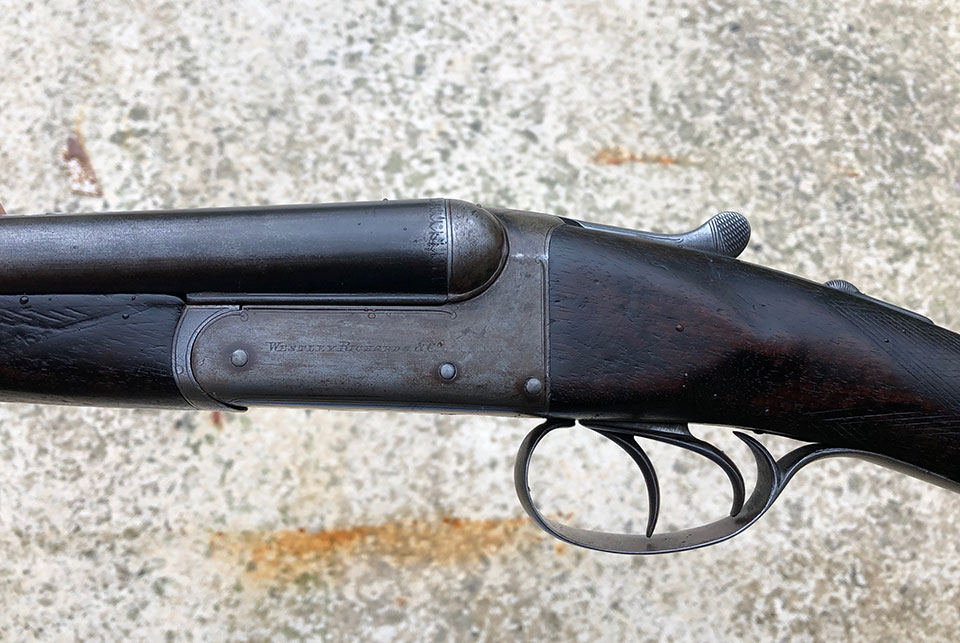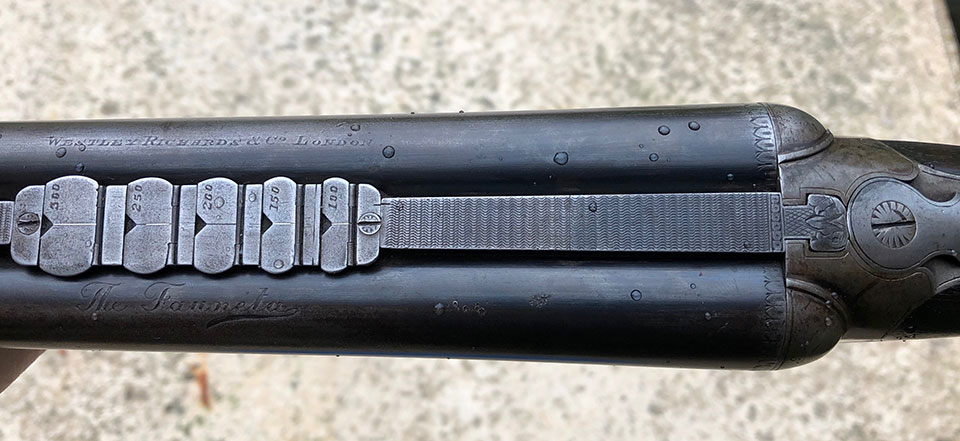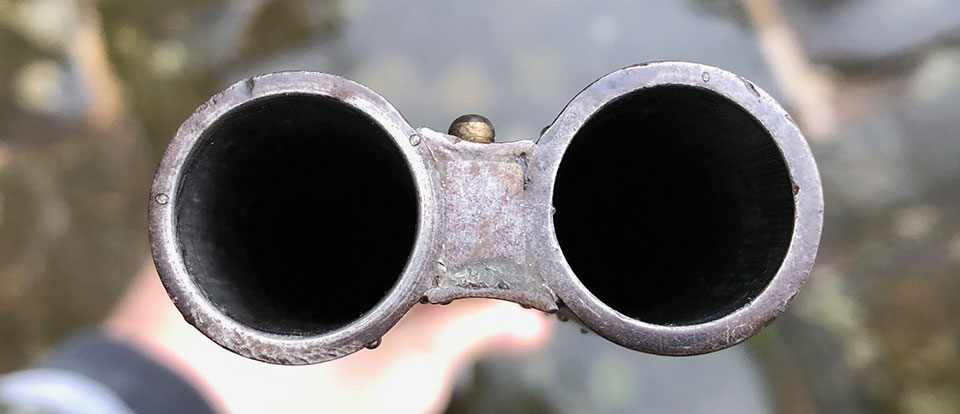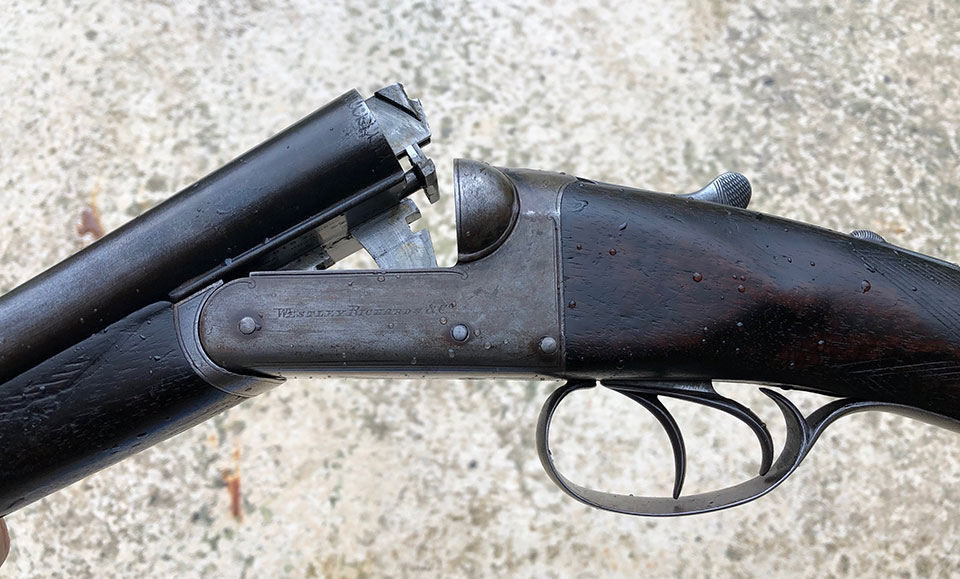Westley Richards publish a blog on their website, full of interesting information about their products and the process of creating them. It is called ‘The Explora’. Indeed, so successful has it become that they have used the title for another project; a beautifully created journal dedicated to all things shooting and gun making; with Westley Richards’ trademark quality apparent in every facet of its production.
The Explora is on sale in limited numbers from July 1st but that really is incidental to my point. It is the name that started me on the subject. The original use of ‘The Explora’ at Westley Richards was to attach it to a 12-bore sporting arm designed to fire both shot and ball (actually a conical bullet, designed by Leslie Taylor, the Managing Director). It was part- rifled in a manner similar to the Holland & Holland ‘Paradox’, patented by Col. Fosberry.
The Explora fired a 730 grain bullet at 1,500 fps and proved effective on soft skinned dangerous game, like tigers, as well as working as a shotgun when called upon to bag birds for the pot or sport.
The little brother of the Explora, basically the same concept in 20-bore, was called the Fauneta and I took delivery of one recently, when an American customer bought one blind in an auction, via the internet.
We tend to think of ‘shot & ball’ guns as rather unsatisfactory compromises. A ‘Jack-of-all-trades’ is rarely the master of any. However, the Fauneta, in its day, was considered a serious rifle in its own right. When compared to other, conventional, sporting rifles of the era, like the Mannlicher .256 or the .303 British, it fired a much bigger bullet at a greater speed.
It was expected to group at a range of 100 yards within four inches, firing left, then right barrel in sequence for ten shots.
The Fauneta bullet; a solid lead projectile with a brass front section, waisted, almost in the manner of an air rifle pellet, weighed a hefty 410 - 435 grains, while the .303 typically fired a 215 grain bullet. It was expected to group at a range of 100 yards within four inches, firing left, then right barrel in sequence for ten shots. The Fauneta weighed, a relatively slight, 6 1/2 lbs. The cartridge was a high-brass, paper-cased shell, which was pressed into the banded waist of the bullet to hold it in place.
In 1919, the Westley Richards published an extract from a letter referring to the effectiveness of the Fauneta by the Private Secretary to the Maharajah of Dhar: "It will interest you to know that her Royal Highness The Maharani Sahiba of Dhar has recently shot a Tiger measuring 10ft. 4ins. with your 20-bore 'Fauneta' Ball and Shot Gun, which H.H. has been using for some time. It stopped the animal with one shot.”
Before the first World War, a Fauneta cost £100 in fixed lock, two-trigger form. With hand-detachable locks and single-trigger, the price rose to £145.
The Fauneta that appeared in my gun room for appraisal is typical of many guns and rifles which went to India. This is the plain model, with fixed Anson & Deeley locks, a straight hand stock and 25” steel barrels with dove-tail lumps. The quarter-rib has five leaf-sights, graduated from 100 to 300 yards and, at the muzzle, there is a shotgun-type bead sight. The top rib, for most of its length, is swamped.
Engraving is minimal. The word ‘The Fauneta’ engraved in script on the left tube and ‘Westley Richards & Co, London’ on the right tube. This shows it was sold from the Westley Richards shop in London, as, of course, the company was based in Birmingham.
The forend is of conventional splinter type, with a horn finial and the 1883 Deeley & Edge release catch (also a Westley Richards patent). It is a non-ejector model, The proof marks show it was proof tested for Cordite and with a maximum bullet weight of 510 grains. The ‘R CHOKE’ stamp denotes Rifled Choke. However the rifling, which was a softer version of the Fosberry Paradox rifling, has been honed out to make it a smooth bore.
This seems to have been the fate of a lot of shot and ball guns with rifled chokes. After the British gave up India, the scope for overseas sport seemed very limited, especially as the country was suffering from severe austerity and rationing. A lot of the returning British left their guns in India. I know my grandfather did.
Those that came back were considered more use as shotguns and the rifling was removed, or the barrels sleeved. The barrels on this particular gun are badly pitted but the ribs and loop are soundly fixed and it appears to me mechanically decent, with a lot of use apparent but not much bodge-gunsmithing, apart from the usual enlarged slots in many of the pins.
...the 'Model C' doll’s-head, supported by the Purdey under-bolt, still holds the barrels tight to the action...
The fit of wood to metal remains tight and clean, the woodwork is worn, with no chequer or drop points left but the level of wood is not significantly below the metal parts, where they meet. The striker holes and face of the action are in good order, with no pitting, and the Model C doll’s head, supported by the Purdey under-bolt, still holds the barrels tight to the action, with no perceivable ‘headache’.
I’m currently awaiting the arrival of the speculative American who bought the Fauneta for a small sum in a provincial auction. I look forward to hearing of his plans, whatever they may be. It can not be restored to act as a double rifle; the enlargement of the bore necessary to remove pitting, even if that left sufficient wall thickness, would affect the bullet’s travel adversely and would likely have adverse consequences for accuracy, even if the rifled choke could be replaced.
To do so should be possible, in theory. Teague (now owned by Westley Richards) offer fixed choke replacements and should be able to re-create a rifled choke of ‘Fauneta’ type but it would be economically unviable to do a one-off; especially for a gun in this condition.
I suspect we will end-up doing a sympathetic restoration and bringing it back to use as a shotgun. How it performs with modern 20-bore slugs will be interesting to experiment with. As a short-range forest hunting rifle for boar or deer, it might have potential. Where there is the will, there is often a way.
Published by Vintage Guns Ltd on




